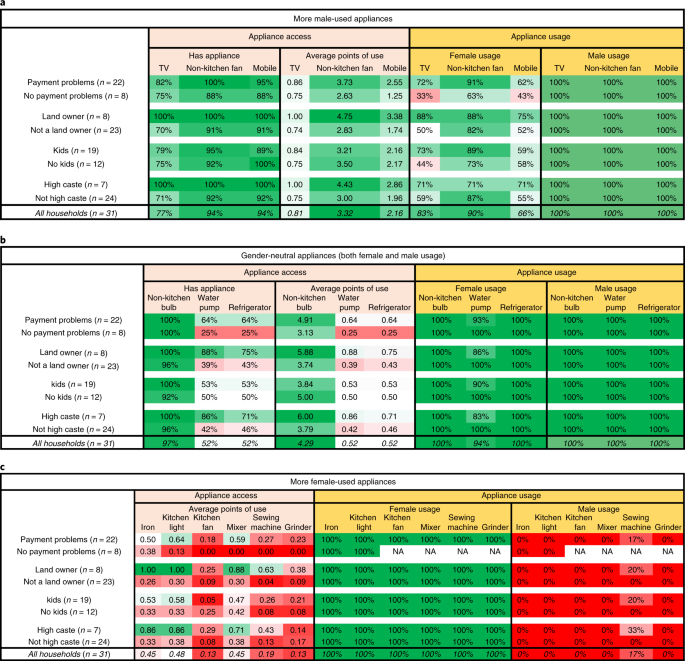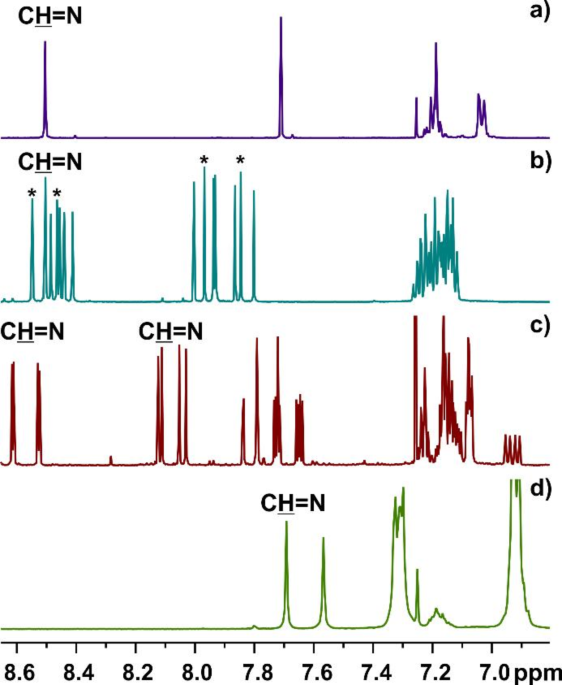
- Select a language for the TTS:
- UK English Female
- UK English Male
- US English Female
- US English Male
- Australian Female
- Australian Male
- Language selected: (auto detect) - EN
Play all audios:
Prior studies suggest that women particularly stand to benefit from increased electricity access. Yet, few have empirically tested this implicit linkage between energy access (SDG 7) and
gender equality (SDG 5). More specifically, few explore how female household members use electricity once it is made accessible. Using India as an illustrative case, we conduct a
mixed-methods study. We first inductively assess household appliance use by gender in Gujarat (n = 31). We then assess the generalizability of the use patterns identified through a
representative six-state household survey (Bihar, Jharkhand, Madhya Pradesh, Odisha, Uttar Pradesh and West Bengal, n = 8,563). In including use, we find that women are neither the sole nor
primary beneficiaries of electricity access, even when appliances that would particularly benefit them are affordable. While energy access could improve gender equity, our study highlights
intra-household power dynamics as an important boundary condition on realizing more equitable energy access.
The data for the generalizability study conducted in six Indian states are publicly available at Harvard Dataverse (https://dataverse.harvard.edu/dataverse/IndiaAccess).
The code used to generate the results is also made available here: https://doi.org/10.7910/DVN/DRVBZY. The data for the inductive study in Gujarat (questionnaire data, interview data and
ethnographic observations) are available from the corresponding author on reasonable request.
We thank the Gujarat Institute of Development Research, the School for International Training (SIT) and ANANDI and its partner organization Mahila Swaraj Munch. We thank J. Andharia, the
Executive Director of ANADI, and T. Nair at the Gujarat Institute of Development Research for their assistance in the planning and execution of this study. We thank V. Parmar for his
translation assistance. The inductive study was conducted as part of the M.R’s participation in the SIT India Sustainable Development and Social Change Programme. We thank G. Morgan and
participants of the GAP Conference, Clean Technologies in Developing Countries, at the University of Pittsburgh for their helpful feedback on earlier drafts of the manuscript.
Department of Engineering and Public Policy, Carnegie Mellon University, Pittsburgh, PA, USA
Department of Political Science, University of Pittsburgh, Pittsburgh, PA, USA
Green Design Institute, Carnegie Mellon University, Pittsburgh, PA, USA
Kigali Collaborative Research Center, Carnegie Mellon University African Campus, Kigali, Rwanda
M.R. developed the initial concept for the overall study and designed, executed and contributed to the writing of the inductive portion of the study. D.E.A. contributed to the research
design and the data analysis for the inductive study, to the research design and the data analysis for the generalizability study, and to the overall writing of the paper. M.A. contributed
to the research design and data analysis of the generalizability study, as well as to the overall writing of the entire paper. P.J. contributed to the research design for the inductive study
and contributed to the overall writing of the paper.
Publisher’s note Springer Nature remains neutral with regard to jurisdictional claims in published maps and institutional affiliations.
Application questionnaire, Supplementary Figs. 1 and 2 and Tables 1–22.
Anyone you share the following link with will be able to read this content:






